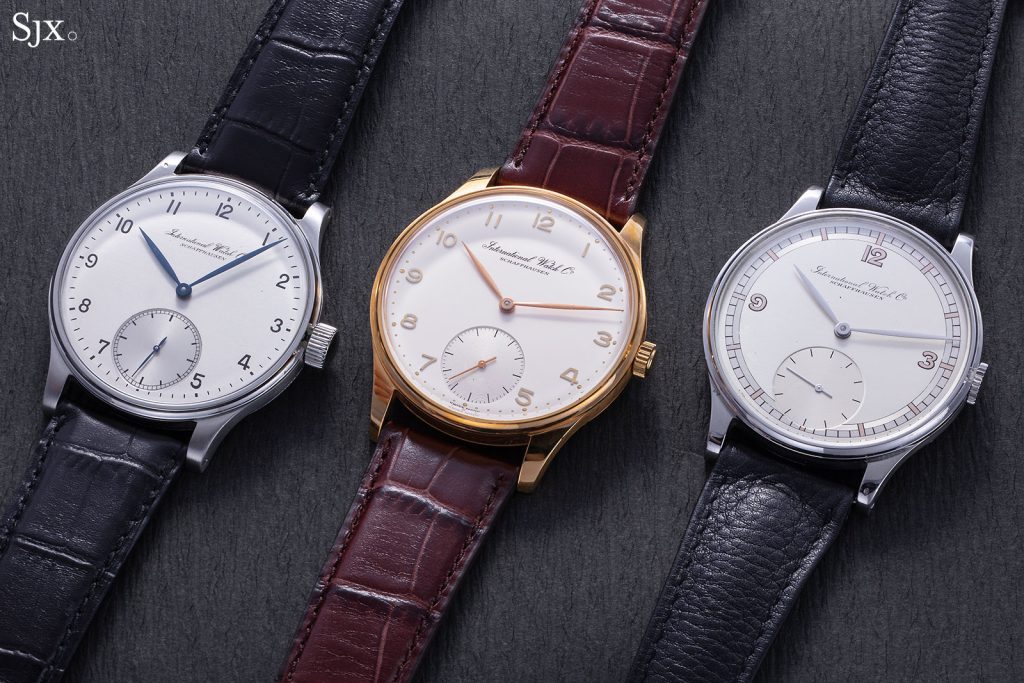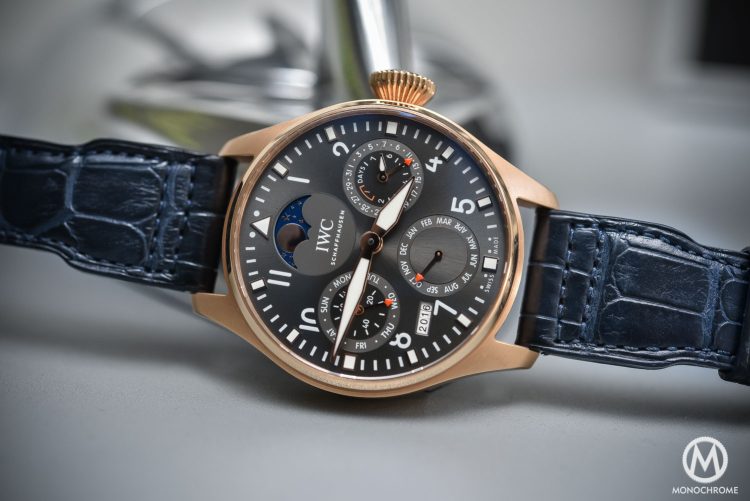Introduction
The International Watch Company (IWC) is one of the most respected and influential names in the world of horology, known for its commitment to precision, innovation, and quality. For over 150 years, IWC has produced timepieces that represent the perfect balance of traditional Swiss craftsmanship and cutting-edge technological advancements. With a dedication to in-house movements, sophisticated complications, and attention to detail, IWC watches are considered some of the most sophisticated and reliable timepieces on the market.
In this detailed article, we will explore the intricate watch technology behind IWC’s timepieces, examining the various advancements and innovations that have shaped the brand’s horological legacy. From mechanical movements to advanced complications, we will analyze how IWC manages to blend classical watchmaking techniques with the latest technological trends, pushing the boundaries of what a luxury watch can achieve.
1. IWC’s Commitment to In-House Movements
1.1 The Importance of In-House Movements
A defining feature of IWC watches is the brand’s commitment to developing and producing in-house movements. An in-house movement means that IWC is responsible for every aspect of its watches’ internal workings, from design and development to manufacturing. This level of control allows the brand to maintain the highest standards of quality and precision while ensuring that each movement is perfectly suited to the aesthetics and functionality of the timepiece.
The use of in-house movements is highly valued by watch collectors and enthusiasts, as it demonstrates the brand’s technical expertise and dedication to horology. Over the years, IWC has developed a wide range of movements, each designed to meet the specific needs and requirements of their respective collections.
1.2 Key IWC In-House Movements
Some of the most notable in-house movements developed by IWC include:
- Caliber 5000: A robust, self-winding movement with a seven-day power reserve, the Caliber 5000 is known for its accuracy and reliability. This movement is used in various IWC models, including the IWC Portugieser Automatic.
- Caliber 52010: Found in models such as the IWC Big Pilot’s Watch, the Caliber 52010 boasts a power reserve of seven days and a newly developed Pellaton winding system. This movement ensures a smoother and more efficient transfer of energy, improving the overall performance of the watch.
- Caliber 9460: IWC’s highly complex in-house chronograph movement, the Caliber 9460, powers watches in the IWC Ingenieur and other collections. With chronograph functionality, a date complication, and a moonphase display, this movement highlights IWC’s mastery of both basic and advanced watch technologies.
2. Technological Innovations in IWC Watches
2.1 The Pellaton Winding System
One of the most important technological innovations in IWC’s history is the Pellaton winding system, developed in the 1940s by IWC’s chief engineer, Albert Pellaton. This innovative system was designed to enhance the efficiency of a mechanical watch’s self-winding mechanism, allowing the watch to generate more power with less effort.
The Pellaton system works by using a pawl and ratchet to wind the mainspring as the rotor moves with the motion of the wearer’s wrist. The system’s design is highly efficient, requiring fewer moving parts, resulting in a smoother winding process and reduced wear on the components. This system has been refined and incorporated into several of IWC’s most notable movements, including the Caliber 5000 and Caliber 52010.
2.2 Ceramic and Titanium in Watch Construction
IWC is known for its innovative use of advanced materials in watchmaking. In particular, the brand has pioneered the use of ceramic and titanium in its timepieces, both of which offer significant advantages in terms of durability, weight, and aesthetics.
- Ceramic: Known for its scratch resistance and lightweight properties, ceramic has been a favored material in IWC’s Pilot’s Watches and Ingenieur collections. Ceramic is also highly resistant to corrosion and wear, ensuring that the watch retains its pristine appearance over time. Additionally, ceramic’s hypoallergenic properties make it an ideal choice for those with sensitive skin.
- Titanium: IWC has also embraced the use of titanium in several of its models, particularly in the IWC Big Pilot’s Watch. Titanium is incredibly strong and lightweight, making it an ideal material for creating durable yet comfortable timepieces. The use of titanium also gives IWC watches a distinct aesthetic, with a matte finish that is both modern and sophisticated.
2.3 The IW3270 Movement and the Advanced Perpetual Calendar
IWC has demonstrated its technological prowess through the creation of advanced complications, particularly in the realm of perpetual calendars. The IW3270 movement, for instance, is part of IWC’s iconic Portugieser Perpetual Calendar collection, which integrates a perpetual calendar complication that requires no manual adjustment until the year 2100.
The development of this movement is a testament to IWC’s watchmaking expertise, as it relies on an intricate series of gears, levers, and cams to account for leap years and the varying lengths of months. The IWC perpetual calendar movement is considered one of the most reliable and accurate in the industry, offering a level of convenience and practicality that few other brands can match.
2.4 The Flying Tourbillon
One of the most technical complications IWC has introduced is the flying tourbillon, a highly complex mechanism that is used to counteract the effects of gravity on the accuracy of the watch’s movement. By mounting the tourbillon on a single axis, rather than the traditional two, IWC has created a lightweight and visually striking tourbillon that allows for improved precision in timekeeping.
The IWC Grande Complication collection features models that incorporate a flying tourbillon, showcasing the brand’s ability to merge traditional horological expertise with modern technology. These watches not only demonstrate IWC’s mastery of mechanical watchmaking but also highlight the company’s commitment to pushing the boundaries of what is possible in watch technology.

3. The Role of Smartwatch Technology in IWC’s Future
While IWC is renowned for its mechanical watchmaking, the brand has also been keen to incorporate modern technology into its offerings. The rise of smartwatches has prompted many traditional watchmakers to experiment with hybrid designs that combine mechanical movements with smartwatch features.
IWC’s Connect IWC project is an example of how the brand has embraced technology while preserving its commitment to traditional craftsmanship. This smartwatch integrates with the IWC mobile app, providing users with a seamless connection to their timepieces. While the IWC Connect smartwatch still focuses on classic design and high-end materials, it allows wearers to enjoy features like fitness tracking, notifications, and more.
IWC’s approach to integrating smartwatch technology is an example of how the brand is adapting to the changing demands of the modern market while remaining true to its heritage. By focusing on creating hybrid timepieces that appeal to both traditional watch enthusiasts and tech-savvy consumers, IWC has ensured that it remains at the forefront of innovation in the luxury watch industry.
4. Collaborations and Partnerships in Watch Technology
IWC has been active in forming partnerships with other brands and institutions to enhance its watchmaking capabilities. These collaborations have resulted in some of the most impressive technological advancements in the industry.
4.1 The IWC and Mercedes-Benz Collaboration
One of the most notable collaborations IWC has pursued is its partnership with Mercedes-Benz. The two brands share a commitment to engineering excellence and precision, making them ideal partners for co-developing timepieces with cutting-edge technology. The IWC Ingenieur collection, for example, features models that were developed in collaboration with Mercedes-Benz, showcasing a blend of automotive design and advanced watch technology.
4.2 IWC and the National Oceanic and Atmospheric Administration (NOAA)
IWC has also been involved in technical collaborations with organizations such as the NOAA, which is responsible for oceanic and atmospheric research. The IWC Aquatimer collection, for example, features models that are designed for divers and professionals who require reliable timekeeping in extreme conditions. These watches incorporate advanced features such as water resistance, depth gauges, and luminescent markers to ensure that they perform at the highest level in demanding environments.
5. Conclusion: How IWC Continues to Lead the Way in Watch Technology
IWC’s legacy as a leader in watchmaking technology is firmly rooted in its ability to combine traditional craftsmanship with cutting-edge innovation. From its in-house movements and technical complications to its pioneering use of advanced materials and smartwatch integration, IWC has demonstrated an unwavering commitment to excellence in every aspect of its timepieces.
As IWC continues to innovate and refine its offerings, the brand remains at the forefront of the luxury watch industry. Whether through the creation of precision mechanical movements, the integration of modern technologies, or the development of new materials, IWC is committed to pushing the boundaries of what a luxury watch can be.
For watch enthusiasts, collectors, and those seeking the ultimate in watchmaking technology, IWC remains an iconic brand that perfectly blends tradition and innovation.





































